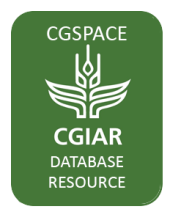/ library resources
Showing items 72415 through 72423 of 73534.This Chapter describes the approach and impacts of the Technologies for African Agricultural Transformation (TAAT) Program.
The Digital Innovation in Agriculture workshop was centred on bolstering digital capabilities within Farmer Producer Organizations (FPOs) and nurturing collaborations with Disruptive Agricultural Technology start-ups.
Genetic variation in wild relatives, GenBank accessions, landraces, and cultivars can unlock key alleles for the traits of interest for breeding programs. Breeding programs often utilize different strategies to quantify the source of heritable variation for target traits.
Climate-smart agriculture (CSA) aims to increase sustainable agricultural production by adapting and building resilience to climate change. It focuses on food security and national development goals and, where possible, it also aims to reduce or remove GHG emissions.
Maize is the major food crop in eastern and southern Africa, including Kenya. Maize-based farming systems make up the largest proportion of agricultural land, and maize is central to the food system, in both rural and urban areas.
Although theory predicts that better property rights to land can increase land productivity through tenure security effects (investment effects) and through more efficient input use due to enhanced tradability of the land (factor intensity effect), empirical studies on the size and magnitude of t
This report summarizes the main findings and insights obtained from the various agroecological value chain analyses conducted in the different Agroecological Living Landscapes (ALL) that take part of the CGIAR Agroecology Initiative (AE-I).
Accelerating Impacts of CGIAR Climate Research for Africa (AICCRA) works to facilitate and scale the development of tailored CIS and climate-smart agriculture making it accessible to smallholder farmers in six target countries. However, the costs
Across a wide range of inequality measures, survey data measure lower levels of inequality in 2019/20 compared to a decade earlier in 2010/11. The latest survey data put Malawi’s Gini Coefficient at 0.38. The 20% richest households consume about half of the country’s total consumption.
Paginación
Land Library Search
Through our robust search engine, you can search for any item of the over 64,800 highly curated resources in the Land Library.
If you would like to find an overview of what is possible, feel free to peruse the Search Guide.


